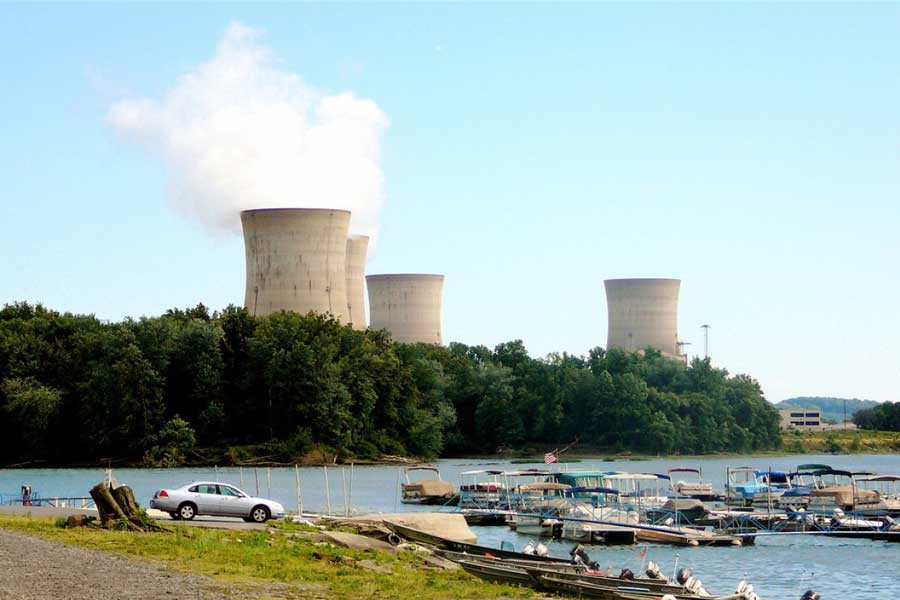
Published :
Updated :

The weak radioactive metal Thorium (Th) in nature was discovered in 1828 by the Swedish chemist Jens Berzelius. The new element was named after Thor, the god of thunder in Scandinavian countries. Thorium is present in a small amount in many rocks and soils, where its content is almost three times higher than that of the Uranium. In nature, Thorium is mostly found in the form of Thorium phosphate compounds in monazite sand, which contains up to 12% of Thorium oxide.
Over the past 30 years, interest in Thorium as a nuclear fuel has greatly increased in the world, since its reserves in the earth's crust greatly exceed the reserves of Uranium. One of the advantages of it is that all of the mined Thorium can be used in nuclear reactors, unlike the U-235 (Uranium -235) isotope, which is only 0.7% of natural uranium. Besides, Thorium is safe and does not produce radioactive waste. With all these advantages, Thorium should have brought nuclear energy to the heights of development, but practically did not, due to some reasons.
At present, the global fleet of industrial nuclear reactors makes full use of uranium fuel, and in particular, the U-235 isotope. This happened for a simple reason - this is the only natural isotope that is capable of supporting a chain reaction. Other natural heavy elements, like U-238 (Uranium- 238) and Th-232 (Thorium-232) do not support a nuclear chain reaction. There are several other artificially produced isotopes that can be used in a nuclear reactor - for example, the well-known Pu-239 (Plutonium-239) or U-233 (Uranium-233) , obtained by converting U-238 and Th-232.
In fact, Th-232 is one of the main competitors of U-238 - a substance that can be converted into nuclear fuel. Let's see the advantages and disadvantages of Thorium as a nuclear fuel:
Thorium's presence in the earth's crust is several times more than that of Uranium, which is a clear advantage of Thorium. To get Thorium, it is necessary to find out its deposits and develop required processing industry. The main problem is Thorium like other rare-elements is a very dispersed element of the earth crust. On the other hand, 3.5 million tonnes of Uranium are already in warehouses with all the necessary infrastructure for processing.
Thorium has no minor actinides-related problems. Minor actinides include the long-lived and relatively long-lived isotopes of Neptunium (Np-237), Americium (Am-241, Am-243) and Curium (Cm-242, Cm-244, Cm-245), which are produced in nuclear reactors. When a nuclear reactor is operated on conventional fuel like 3-5% U-235 and 95-97% U-238 a number of unwanted substances, minor actinides, are formed. All of them are radioactive, and what is especially important is they are powerful gamma ray emitters having a very long half-life, which is thousands of years. This means their shelf life is from hundreds of years to tens of thousands of years. Fuel based on the Thorium cycle becomes non-radioactive in a few hundred years against hundreds of thousands of years in case of Uranium cycle. This is the main plus point of using Thorium fuel.
Another visible advantage of Thorium is the absence of problems with regards to proliferation of nuclear weapons technologies. But this is not entirely true. Yes, there is no plutonium, but there is U-233, from which nuclear weapons can also be created.
Another disadvantage of Thorium as a nuclear fuel is the formation of the U-232 isotope. The secondary isotope U-232, which will be produced in fuel with Thorium, gives a chain of elements during radioactive decay, which are the most powerful sources of gamma radiation. The presence of gamma emitters significantly complicates the reprocessing of nuclear fuel already spent in the reactor.
Other than what is mentioned above Thorium does not have any mentionable disadvantages or advantages over uranium. With the absence of large-scale production and the absence of a closed nuclear fuel cycle, Thorium does not have very many chances for wider use, at least for today.
Presently the nuclear industry has neither special needs, nor opportunities for construction of Thorium-based reactors for energy. Economically, Thorium will not be interesting until the cost of a kilogram of uranium exceeds $ 300, as formulated in the conclusions of the IAEA report on the Thorium cycle.
Aleksei Puzakov is Senior Lecturer, Department of "Nuclear Physics and Engineering", Obninsk Institute for Nuclear Power Engineering, under the National Research Nuclear University MEPhi, Russia.
E-mail: lexx148@yandex.ru


 For all latest news, follow The Financial Express Google News channel.
For all latest news, follow The Financial Express Google News channel.